Gallery
- Racton Monument, West Sussex
- Radcliffe Observatory, Oxfordshire
- Maidenhead Guildhall, Berkshire
Theodosius Keene | |
|---|---|
| Born | 1754 |
| Nationality | English |
| Occupation | Architect |
| Years active | 1770 - 1777 |
Notable work | Racton Monument |
Theodosius Keene, born in 1754, was an English architect who conducted most of his work in the south of England between 1770 and 1777. [1]
Theodosius was born around 1754 as the son of notable English architect Henry Keene, famous for his Gothic Revival and Neoclassical buildings. [1]
He designed Racton Monument around 1770, a red brick turreted folly in West Sussex, possibly built as a summerhouse for the nearby Stansted Estate. [2] [3] Racton Monument stands to this day, albeit a ruin. In 1777 he designed the Maidenhead Guildhall, a replacement for the original medieval building which was constructed around 1430. [4] [5] It consisted of a council chamber, assembly room, a corn exchange, a lockup and also held a beer house called the ‘Fighting Cocks Inn’. [4] The guildhall was demolished in February 1963 to make way for the Town Hall. [4] [6] It is also believed that in 1794 he completed Radcliffe Observatory, under the direction of James Wyatt, since his father died before finishing the building.

John Bacon was a British sculptor who worked in the late 18th century.
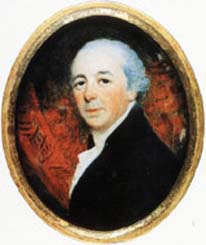
John Nash was one of the foremost British architects of the Regency and Georgian eras, during which he was responsible for the design, in the neoclassical and picturesque styles, of many important areas of London. His designs were financed by the Prince Regent, and by the era's most successful property developer, James Burton, with whose son Decimus Burton he collaborated extensively.
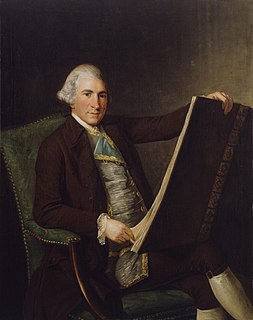
Robert Adam was a Scottish neoclassical architect, interior designer and furniture designer. He was the son of William Adam (1689–1748), Scotland's foremost architect of the time, and trained under him. With his older brother John, Robert took on the family business, which included lucrative work for the Board of Ordnance, after William's death.

The Tower of the Winds or the Horologion of Andronikos Kyrrhestes is an octagonal Pentelic marble clocktower in the Roman Agora in Athens that functioned as a horologion or "timepiece". It is considered the world's first meteorological station. Unofficially, the monument is also called Aerides, which means Winds. The structure features a combination of sundials, a water clock, and a wind vane. It was supposedly built by Andronicus of Cyrrhus around 50 BC, but according to other sources, might have been constructed in the 2nd century BC before the rest of the forum. In summer of 2014, the Athens Ephorate of Antiquities began cleaning and conserving the structure; restoration work was completed in August 2016.

James Wyatt was an English architect, a rival of Robert Adam in the neoclassical and neo-Gothic styles. He was elected to the Royal Academy in 1785 and was its president from 1805 to 1806.

George Dancethe younger, RA was an English architect and surveyor as well as a portraitist.
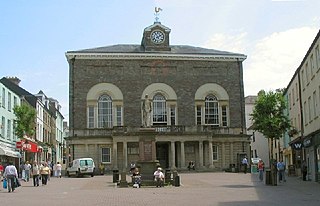
Sir Robert Taylor (1714–1788) was an English architect who worked in London and the south of England.
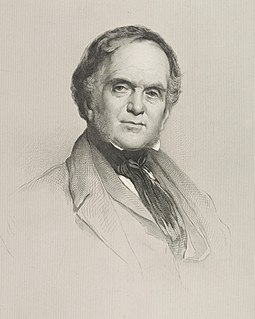
William Henry PlayfairFRSE was a prominent Scottish architect in the 19th century, who designed the Eastern, or Third, New Town and many of Edinburgh's neoclassical landmarks.

Marcin Odlanicki Poczobutt was a Polish–Lithuanian Jesuit, astronomer and mathematician. He was professor of Vilnius University for over 50 years, serving as its rector from 1780 to 1799. The Poczobutt crater on the Moon is named after him.
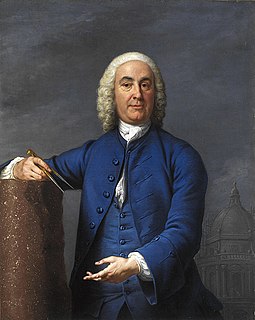
James Gibbs was one of Britain's most influential architects. Born in Scotland, he trained as an architect in Rome, and practised mainly in England. He is an important figure whose work spanned the transition between English Baroque architecture and a Georgian architecture heavily influenced by Andrea Palladio. Among his most important works are St Martin-in-the-Fields, the cylindrical, domed Radcliffe Camera at Oxford University, and the Senate House at Cambridge University
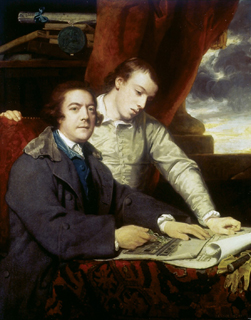
James Paine (1717–1789) was an English architect.

John Carr (1723–1807) was a prolific English architect, best known for Buxton Crescent in Derbyshire and Harewood House in West Yorkshire. Much of his work was in the Palladian style. In his day he was considered to be the leading architect in the north of England.
Henry Keene was an English architect, notable for designing buildings in the Gothic Revival and Neoclassical style.

Thomas Farnolls Pritchard or Farnolls Pritchard was an English architect and interior decorator who is best remembered for his design of the first cast-iron bridge in the world.
George Webster was an English architect who practised in Kendal, which was at the time in Westmorland, and later in Cumbria. All of his works were executed near his practice, and were located in Cumbria, in north Lancashire, and in the adjacent parts of Yorkshire. Most of his work was carried out on domestic buildings, but he also designed churches, and public and commercial buildings.
James Essex (1722–1784) was an English builder and architect who worked in Cambridge, where he was born. He designed portions of many colleges of the University of Cambridge, and carried out major restorations of the cathedrals at Ely and Lincoln. He was an admirer of Gothic architecture, and assembled materials for a history of the style, though the book remained unpublished.

Racton Monument is a folly on a hill in Racton, West Sussex, England with views over Chichester Harbour and to the Isle of Wight. It was commissioned by the 2nd Earl of Halifax, either as a summerhouse for the nearby Stansted Estate or so he could watch his merchant ships dock at the nearby port, Emsworth, or as a personal viewing tower to watch for his son's return from an ill-fated voyage.

Thomas Taylor was an English artist and architect. Although he did not achieve the reputation or the output of Thomas Rickman, he was another pioneer in the use of the Gothic Revival style in church architecture.

Ernest Berry Webber, was an English architect, surveyor and town planner best known for his designs of municipal buildings, including those in Southampton in Hampshire, and Dagenham and Hammersmith, both in London.

Maidenhead Town Hall is a municipal building in St Ives Road, Maidenhead, Berkshire, England.